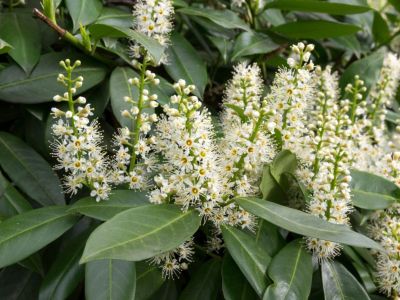What is Cherry Laurel?
Whether you want a lovely specimen tree or an attractive living hedge, cherry laurel shrubs (Prunus laurocerasus) are a beautiful addition to any landscape. Native to the eastern Mediterranean –the Balkans, Asia Minor, and areas bordering the Black Sea– this attractive, upright, evergreen shrub or small tree grows from 15 to 40 feet (4.5-12 m.) in height with a 10 to 35 foot (3-10 m.) spread. Hardy to zone 5, according to the USDA plant hardiness map, cherry laurel shrubs produce beautiful and aromatic white flowers in the spring. There are many types of the cherry laurel plant to choose from, ranging from compact shrubs to small tree forms.
When to Plant Cherry Laurel
The best time for when to plant cherry laurel is in the fall. Select high-quality nursery stock with roots that are wrapped in burlap or you can grow them from container plants. Select a sunny or partly sunny area with fertile, well-drained soil and a soil pH of 6.5 to 7.5. Be careful when removing the shrub from the container or burlap wrapping so as not to damage the roots. Use only native soil to backfill the shrub-planting hole and do not provide any fertilizer. Water your cherry laurel plant thoroughly to help roots establish.
How to Care for Cherry Laurel
Once a cherry laurel is established, it is very easy to care for. Other than occasional watering, provide a balanced fertilizer in early spring. This low maintenance beauty can be pruned for size if used as a hedge or left alone with its attractive natural shape. Prune out any dead branches with clean and sharp pruning shears. Spread a 3 inch (8 cm.) layer of compost or mulch around the plant for moisture retention and protection. Cherry laurels are healthy plants overall but sometimes develop fungal problems. Watch for signs of pests as well, like whitefly or borer infestations, and treat immediately with an appropriate pesticide such as neem oil.
